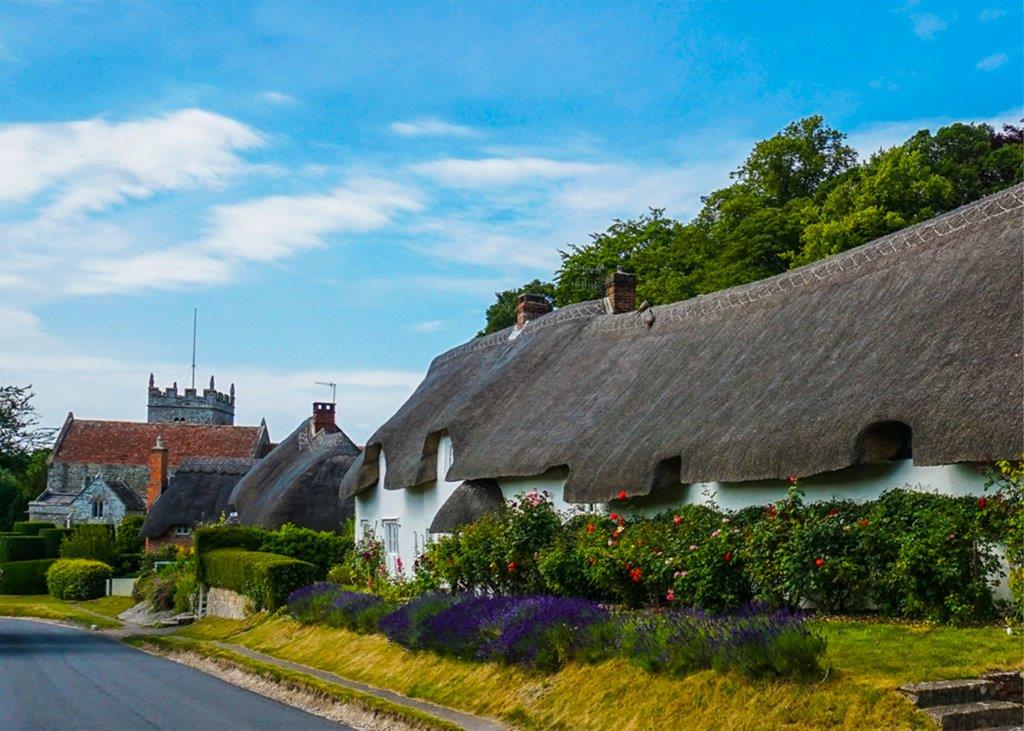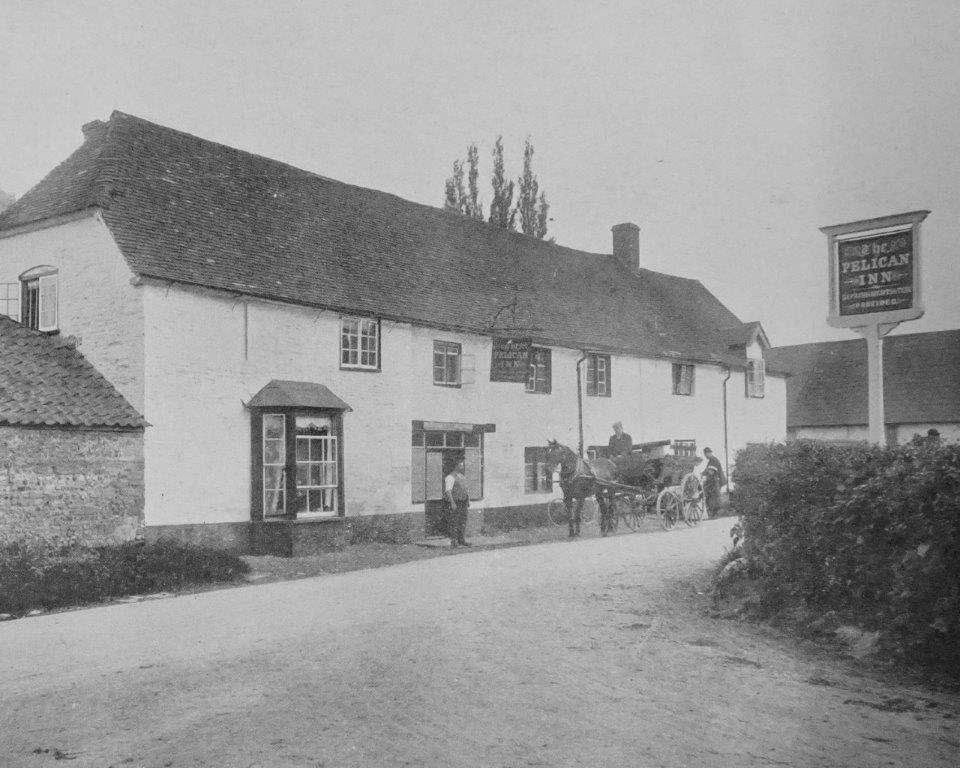
Berwick Road. looking towards St. Mary's Church
Stapleford
Wiltshire

Berwick Road. looking
towards St. Mary's Church
Stapleford is located some four and a half miles south west of Stonehenge, alongside the River Till, a spring-fed winterbourne, just above its confluence with the River Wylye. The name is a Saxon word meaning a staple or post marking a ford. It is mentioned in the Domesday Book of 1086 and would appear to have been quite rich, with well-farmed land and two mills on the Wylye, the last demolished about 150 years ago. The two remaining farms in the parish are Manor Farm, largely arable, and Druids Lodge, again mainly arable but which also runs a large dairy herd. Nearby Manor Farm are the earthwork remains of Stapleford Castle, a Norman ringwork and bailey castle, once owned by Waleran, William the Conqueror’s huntsman.
Census records between 1801 and 2011 indicate that the population peaked in 1831 to 337 inhabitants, with an average population over that period of 256, the present population being very close to that average figure. Unsurprisingly, there is no school in the parish, although there was a National School from 1874 to 1925 which now serves as the village hall.
The village has the Normans to thank for a fine stone parish church, St. Mary’s. Work started in the early 12th century, with the body of the church being completed in its current form by 1450 and the tower being added in 1674. Millennium fundraising enabled the church bells to be rehung and tuned, and a replacement treble added. Two of the original bells date back to the 17th century and the ring of six bells are enthusiastically rung by a band of ringers from the village.
A short distance from the church is Thatchers Cottage where, in the summer of 1938, Ralph Vaughan Williams, the composer, found accommodation and composed part of his great Fifth Symphony. His second wife, Ursula, has been reported as saying that he enjoyed walking to Salisbury, more than seven miles away, to meet his friend the cathedral organist, Walter Alcock, who played Bach with him in the cathedral.
There doesn’t appear to be a roll of honour in the parish for those who served in the Great War; but anecdotal evidence portrays a group of men with familiar rural occupations – farm worker, cowman, roadman, postman, carpenter and wheelwright – who fought in Europe and returned home safely to resume their lives in a small village on the edge of Salisbury Plain. A search of surviving Great War service records, in which soldiers were required to give their place of residence, confirms that there were soldiers from Stapleford, and that they survived the war.

The Pelican Inn, 1909
Text by Tim Bale with thanks to John Brierley for some historical content.
Contemporary photo by Terry Waldron.